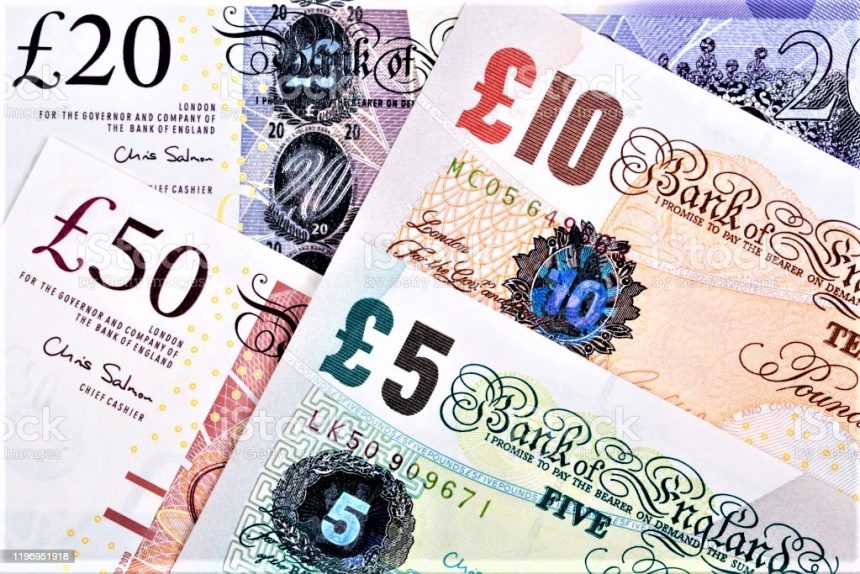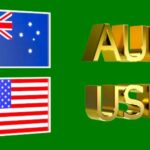Pound Slips as Reeves Voices Concern Over April Inflation Surprise.
The British Pound (GBP) gave up a portion of its early Wednesday gains after UK Chancellor Rachel Reeves expressed disappointment over stronger-than-expected inflation data for April. The hot Consumer Price Index (CPI) print, especially within the services sector, cast doubts on a near-term shift to monetary easing by the Bank of England (BoE), sending the GBP lower despite lingering US Dollar weakness.
Inflation Heats Up Across the Board: Core, Headline, Services Jump
Data released by the UK Office for National Statistics (ONS) painted a worrisome inflationary picture. April’s headline CPI surged to 3.5% year-on-year, up sharply from March’s 2.6% and beating the market forecast of 3.3%. This marks the highest inflation reading since November 2023.
Meanwhile, core CPI rose to 3.8%, surpassing expectations of 3.6% and the previous 3.4% level. Notably, service sector inflation, closely tracked by BoE policymakers, jumped to 5.4% from 4.7%, a significant increase that reflects rising wage and cost pressures in labor-intensive sectors.
Month-over-month inflation data was equally disconcerting, with headline CPI up 1.2%, well above the 0.3% seen in March. These numbers signal sustained pricing pressures across essential and discretionary sectors alike.
Reeves’ Reaction Reflects Economic and Political Sensitivity
Chancellor of the Exchequer Rachel Reeves publicly addressed the inflation surprise, stating: “I am disappointed with the inflation figures.” The comment reflects the growing political and economic dilemma facing the UK government, which has been trying to balance growth support with inflation containment. For Labour leaders ahead of the general election expected later this year, such inflation data may complicate campaign narratives centered around cost-of-living relief.
Reeves’ statement underscores the BoE’s rising concern over persistent inflation and throws cold water on hopes for a dovish pivot. The monetary policy landscape in the UK is now entering a more uncertain phase, where aggressive easing seems increasingly unlikely in the short term.
Services Inflation the Ticking Time Bomb for BoE
Of all the components in the CPI report, services inflation is the most critical for the Bank of England. It is regarded as a more accurate indicator of domestic inflationary pressures driven by wages and consumption, unlike volatile components like energy and food.
The jump to 5.4% in services inflation is problematic. It suggests that underlying price pressures remain sticky, and the BoE may be forced to abandon its “gradual and cautious” approach to monetary easing. The June policy meeting now looms as a potentially pivotal moment, where the central bank may hint at keeping rates higher for longer.
BoE Pill Warns Against Premature Easing
Earlier in the week, BoE Chief Economist Huw Pill echoed caution over rate cuts, referencing structural changes in inflation dynamics. According to Bloomberg, Pill emphasized that the economy is still dealing with the lagging effects of prolonged above-target inflation and warned that aggressive loosening could reignite price pressures.
This aligns with the services CPI data and suggests internal consensus at the BoE may be shifting away from imminent cuts. With the BoE walking a tightrope between stabilizing inflation and preventing recessionary drag, its next moves will be scrutinized for any shifts in tone or direction.
Pound Retreats from 1.3470 High After CPI Shock
The Pound had initially surged to a three-year high of 1.3470 against the US Dollar, capitalizing on broad-based Greenback weakness driven by domestic US issues. However, the stronger-than-expected UK inflation figures and the subsequent policy implications led to a pullback, with Pound drifting back toward 1.3400.
Despite the retreat, Pound remains up about 0.15% on the day, supported by US Dollar underperformance. The macro backdrop continues to favor the GBP in the near term, provided inflation concerns don’t intensify further and risk aversion stays in check.
USD Under Siege: Moody’s Downgrade and Trump’s Tax Bill Woes
The US Dollar’s decline this week has been amplified by a Moody’s downgrade of the US sovereign credit rating, lowering it one notch from Aaa to Aa1. This cut comes amid mounting fiscal imbalances, ballooning debt—now exceeding $36 trillion—and rising interest costs.
Adding to the pressure, President Donald Trump’s proposed tax reforms, which could add another $3–5 trillion to federal debt, have faced stiff opposition in Congress. Republican lawmakers are resisting provisions that raise deduction caps on state and local taxes. On the other side, Democrats have criticized the bill for favoring the wealthy and jeopardizing social safety nets like Medicaid.
As political gridlock deepens, confidence in US fiscal sustainability weakens, pulling down the US Dollar Index (DXY) to 99.45, its lowest level in two weeks.
Fed Policymakers Signal Rate Hold Amid Policy Uncertainty
Several Federal Reserve officials have highlighted concerns over the potential for stagflation, citing risks tied to Trump’s economic agenda. New tariffs and spending plans could stoke inflation just as growth begins to falter, putting the Fed in a bind.
With this in mind, the Fed appears inclined to keep interest rates elevated, diverging from earlier expectations of cuts in the second half of 2025. This shift has compounded Dollar woes, allowing rival currencies like the GBP and EUR to gain ground—albeit with their own domestic risks.
Cross-Currency Performance: Pound Stronger But Slipping
A heat map of major currency moves shows the GBP performed well against the USD but weakened against most of its G10 peers. Notably, GBP was:
- Up 0.12% against the USD
- Down 0.32% vs the EUR
- Down 0.35% against the CHF
- Slightly lower vs JPY, CAD, AUD, and NZD
The mixed performance reflects both tailwinds from US Dollar weakness and headwinds from domestic inflation challenges. The currency may remain volatile in the coming weeks as traders weigh conflicting macro drivers.
Outlook: Will Hot CPI Shift BoE’s Path Dramatically?
Markets will now closely monitor BoE communications leading up to the June policy decision. The central bank must navigate rising services inflation, evolving wage dynamics, and an uncertain fiscal backdrop. While the GBP is benefiting from US Dollar softness, UK-specific risks could cap further gains.
For now, the Pound’s outlook hinges on the following key factors:
- June BoE policy guidance – Will officials delay rate cuts indefinitely?
- UK wage data and job market trends
- Fiscal measures ahead of general elections
- Global risk sentiment and Dollar trajectory
Unless UK inflation recedes sharply or the BoE shifts unexpectedly dovish, Sterling’s upside may stay limited.
[faq-schema id=”39639″]









